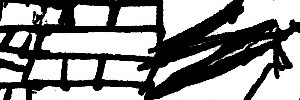In Phnom Penh, Cambodia, is the Tuol Sleng Genocide Museum, the former Security Office 21 in “Democratic Kampuchea,” an interrogation center created by Pol Pot (Saloth Sâr) in 1975. In April 1975, the Khmer Rouge led a victorious attack on Cambodia’s capital city, Phnom Penh. Pol Pot led the Khmer Rouge in an effort create a society of rural collectives and viciously purge Cambodia of who didn’t fit the preferred mold. The Khmer Rouge forbade religion, popular culture, and all forms of self-expression. What made wandering about Security Office 21 even more eerie is the building had once housed a school. Picture a school behind this fence.
The Killing Fields refers to grounds where Khmer Rouge dumped bodies after summary executions of prisoners taken in trucks from Tuol Sleng. I remember being totally on edge while watching the 1984 movie, The Killing Fields (directed by Roland Joffé). I knew what it was about when I bought the ticket, but I had no idea of the horror it so well conveyed. At Tuol Sleng, memories of the movie came rushing forth and brought the place to life, in a most unpleasant way.
“I see … a pile of skulls and bones. For the first time since my arrival, what I see before me is too painful, and I break down completely. These are my relatives, friends and neighbors, I keep thinking … It is a long time before I am calm again. And then I am able, with my bare hands, to rearrange the skulls and bones so that they are not scattered about.”–Dith Pran writing about his return to Cambodia for The New York Times in 1989.
The Museum’s exhibit of Khmer Rouge uniforms coulght my eye. Chic. Nothing military about them, except that the people who wore them must have been short. Yet they did exude the air of a Grim Reaper.
“To keep you is no gain; to lose you is no loss.”—Khmer Rouge warning
This is a photo of a current Tuol Sleng resident in 2010.
In July 2010, a UN-backed war crimes tribunal sentenced the Chief Jailer Kaing Guek Eav (known as Comrade Duch) for his part in the torture and killing of more than sixteen thousand people. At age sixty-seven, Comrade Duch was sentenced to thirty-five years in prison but deducted the sixteen years already served; he died at age seventy-seven.
The “killing fields” claimed the lives of roughly 1.7 million, a quarter of Cambodia’s then population. The Khmer Rouge was responsible for killing three million people. Sokphal Din and Nawuth Keat survived.
Pol Pot died in 1998 without any formal criminal charges being brought against him. To be fair, some didn’t disapprove of him. His cremated body is said to be in the woods of Northern Cambodia, where he continued to lead his followers following the 1979 overthrow of the Khmer Rouge.
“Civilisation, the orderly world in which we live, is frail. We are skating on thin ice. There is a fear of a collective disaster. Terrorism, genocide, flu, tsunamis.”—Zygmunt Bauman
TATTOO—Journeys on My Mind: GET the audio book (7 hours, 13 minutes) at Barnes and Noble or Google Play or Chirpbooks or Kobo or AudiobooksNow or Downpour or The Podcast App or Scribd or Overdrive. On iTunes, click on audiobooks and search by author. GET the paperback (232 pages) or e-book at Barnes and Noble, at Apple Books or at Amazon. The ebook is also at Smashwords.
Characters of Huffinfield by Tina Marie L. Lamb is now available as an ebook or a paperback at Barnes and Noble and at Amazon. The ebook is also available at Kobo and at Smashwords.
Buy it. Read it. And let me know what you think.


Leave a Reply
You must be logged in to post a comment.